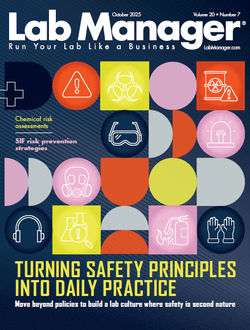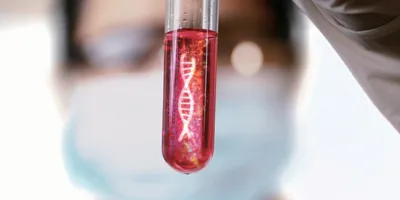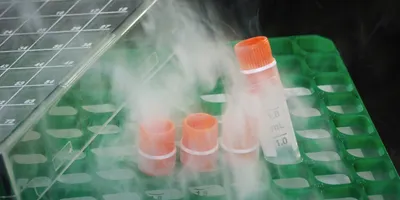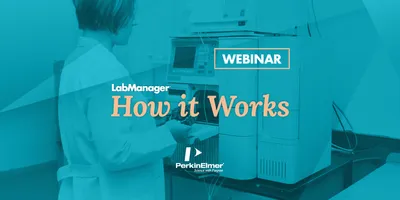Users Demand Productivity, Quality
Conceived as a separations tool for biomolecules, high-performance liquid chromatography (HPLC) has expanded its scope significantly into chemistry, pharmaceuticals, forensics, and organic chemical analysis. The introduction of integrated mass detectors in HPLCMS (mass spectrometry) systems has strengthened HPLC as a confirmatory analysis technique, while the introduction of automation systems has greatly improved system throughput.
HPLC’s evolution has been one of constant improvement in productivity and quality of results, says Terry Adams, life science business manager at Shimadzu Scientific Instruments (Columbia, MD).
Constant improvement
The need for speed and quality has led to faster, more efficient HPLC separations. But as the time between injection and elution shrinks to less than one minute for high-pressure UHPLC (ultra high-performance LC), cycle time becomes the principal bottleneck.
Adams cites several areas of improvement— both inside and outside the narrow analysis loop—that have made a difference in throughput and quality:
- Autosamplers that are easier to clean reduce the time between samples.
- Fused-core or “core shell” columns and media from Supelco, Phenomenex, Advanced Materials, Hichrom, Agilent, and others perform like sub- 2-micron systems but at much lower pressures.
- Multiplexing two or more HPLC systems to a single mass detector utilizes detector downtime.
- Walk-up access allows any lab worker to queue samples onto a communal instrument and walk away.
- Networked instruments e-mail chromatograms or instrument service reports to scientists and technical personnel.
- Multidimensional HPLC, which diverts eluted peaks to an orthogonal LC system (e.g., reverse phase followed by ion exchange), provides peak capacity that is the product of the capacities of both columns.
- Increased use of derivitization for fluorescence and mass detection produces extremely clean fluorescence and mass signals, respectively, even from “dirty” mixtures that do not resolve well on the column.
The controversy over UHPLC and columns employing conventional particle size stationary phases is mostly over. The last major-vendor holdout for the traditionalists, Shimadzu, introduced a high-pressure sub-2-micron- based system at Pittcon 2010. Shimadzu had for years advocated for lower-pressure systems, compiling a mass of data suggesting that throughput and quality improvements were not as easily achievable as Shimadzu’s competitors claimed, or that when they were, the benefits were more than offset by the costs of new systems and time involved in porting methods to lower particle sizes.
What’s interesting here is that Shimadzu introduced the first fast LC system in the 1970s—but soon stopped offering it, due to lack of interest. “Demand was low because the complex, high-throughput applications so common today did not exist back then and computerization was in its infancy,” says Adams. Despite his company’s recent entry into the sub-2-micron fold, Adams believes that most applications do just fine on 2.2-micron columns that are optimized for throughput by optimizing cycle times instead of focusing on the narrower window of analysis time. Adams is also a fan of fused-core columns. However, he acknowledges the lure of high-pressure systems and recognizes that their flexibility will make them popular even among customers who don’t need them—yet.
Hedging their bets
Although traditional HPLC still dominates methods and new system sales, customers increasingly opt for highpressure UHPLC systems, says Phil DeLand, pharmaceutical market manager at Dionex (Sunnyvale, CA). “Many are still using 3- or 5-micron columns, but they’re hedging a bet that they may want or need the speed or resolving capabilities of UHPLC down the road.”
Pharmaceutical industry analysts, for example, will stick with existing HPLC methods for products or pipeline molecules because those have likely already been validated on low-pressure instruments. “They probably would not switch to UHPLC until a new compound comes along that has already been validated with newer methods,” DeLand tells Lab Manager Magazine.
DeLand believes that UHPLC has reached a point of diminishing returns in terms of speed since cycle time often takes substantially longer than a chromatography run. Increasing pressure from 1000 to 1200 bar, which is substantial, may reduce elution time from two minutes to one minute forty seconds, a gain of twenty seconds. “How much time does that really save you within the context of sample prep and data analysis?” DeLand asks. “Not much.” Still, other experts feel that for very highthroughput situations, such as HPLC service labs, every second counts.
Yet many users are eager to upgrade, which brings cost issues to the forefront. At one time, conventional wisdom dictated that purchasers budget 10 percent of system cost per year for maintenance. Users are now challenging that idea, says DeLand. Twenty years ago laboratory personnel took a hands-on approach to instrumentation. This was followed by a period when soup-to-nuts service contracts dominated. “During the last five years, as sample loads have increased and staff has been cut, interest in training for in-house troubleshooting has risen, and with that, demand for more reliable HPLC systems. We have come full circle.”










